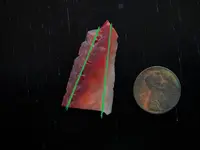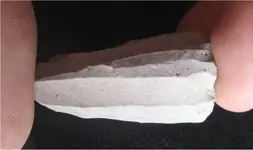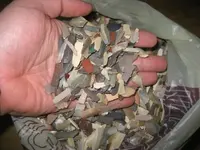Reuellis,
UncleMac described them well. Bladelets usually have some unique features, and one of the features are that they typically come off a prepared core. They carefully took off one bladelet, and then another, etc. and you typically see ridges running down the length of piece. Each successive blade took made another set of ridges. I took Unclemac's picture and added a couple of green lines to highlight these ridges. I guess they could happen during the course knapping, but they are almost always a sign of bladelet production.
View attachment 1473642
They come off cores, this is a more conical core, but there are several different types.
View attachment 1473644
Groups that made them tended to make a lot of them since they are a very efficient use of stone. If you take a chunk of flint about the size of a brick you might get 6 inch biface out if it, which gives you 12 inches of cutting edge. Resharpen it 5 times, and you get 60 inches of cutting edges. You might get thousands of inches of cutting edge if you turn that brick in to bladelets.
They tend to be limited use tools, so if you find the right type of site there can be thousands of them discarded. Once they wash into a river they tend to get dispersed very quickly and most people won't see them. A friend in Texas dug a site with something slightly smaller than a 1/2 mesh sifter and didn't find any, some friends sifted at the same site with a much smaller mesh and found them by the hundreds.
Here are some international ones I have.
View attachment 1473646








